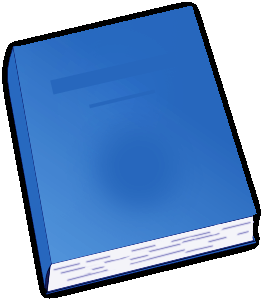|
Books Should Be Free Loyal Books Free Public Domain Audiobooks & eBook Downloads |
|
|
Books Should Be Free Loyal Books Free Public Domain Audiobooks & eBook Downloads |
|
Caxton's Book of Curtesye By: Frederick James Furnivall (1825-1910) |
|---|

Caxton's Book of Curtesye by Frederick James Furnivall is a fascinating and enlightening piece of literature that takes readers on a journey into the world of medieval manners and etiquette. Although the author's name may not be widely known, his expertise and passion for the subject shine through in this meticulously researched and thoughtfully presented work.
The book serves as a direct translation and interpretation of a 15th-century text written by William Caxton, one of the first English printers. Furnivall's remarkable ability to retain the original essence of the text while making it accessible to modern readers is commendable. He succeeds in striking a perfect balance between preserving the historical context and making the content relatable and engaging.
The central theme of the book revolves around the concept of courtesy, which was of utmost importance during the medieval era. Furnivall delves into various aspects of this complex code of conduct, such as table manners, appropriate greetings, dress codes, and the importance of respectful conversation. Each chapter is dedicated to a specific topic, providing a comprehensive exploration of the customs and expectations of medieval society.
What sets this book apart is Furnivall's extensive commentary and analysis of the original text. His insightful explanations and contextualization help readers better understand the nuances of Caxton's work. Furnivall's expertise in Middle English shines through as he dissects the language, making it accessible to those unfamiliar with the intricacies of this historical period. The incorporation of footnotes and glossaries further add to the reader's comprehension.
Beyond its historical value, Caxton's Book of Curtesye offers readers valuable lessons in civility and respect. Furnivall draws connections between medieval etiquette and modern-day manners, highlighting the relevance of courteous behavior even in today's era. By bridging the gap between the past and the present, this book encourages introspection and reflection on our own actions.
One aspect that could be seen as a drawback is the somewhat dense nature of the text. Furnivall's meticulous attention to detail and extensive explanations may overwhelm casual readers or those less familiar with medieval literature. However, for scholars, history enthusiasts, and individuals with a keen interest in the subject matter, this level of detail will be deeply appreciated.
In conclusion, Caxton's Book of Curtesye is an illuminating read that offers a unique glimpse into the customs and expectations of medieval society. Furnivall's translation and thorough analysis make this historical text accessible and relevant to today's readers. It is a valuable resource for anyone interested in history, etiquette, or simply understanding the evolution of societal norms. This book serves as a reminder of the timeless nature of courtesy and the importance of respectful conduct in our interactions. Printed at Westminster about 1477 8 A.D. and Now Reprinted, with Two Ms. Copies of the Same Treatise, from the Oriel Ms. 79, and the Balliol Ms. 354 Edited by FREDERICK J. FURNIVALL, M.A. Editor of 'The Babees Book, Etc.' ('Manners and Meals in Olden Time'), Etc. Etc. London: Published for the Early English Text Society by Humphrey Milford, Oxford University Press, Amen House, E.C. 4 1868 (reprinted 1882, 1898, 1932) PREFACE Though no excuse can be needed for including in our Extra Series a reprint of a unique Caxton on a most interesting subject, yet this Book of Curtesye from Hill's MS. was at first intended for our original series, I having forgotten lately that Caxton had written to 'lytyl Iohn,' though some months back I had entered the old printer's book for my second collection of Manners and Meals tracts for the Society. After the copy of Hill which Mr W.W. King kindly made for his fellow members had gone to press, Mr Hazlitt reminded me of the Caxton, and its first and last lines in Mr Blades's admirable book showed that Hill's text was the same as the printed one. I accordingly went to Cambridge to copy it, and there, before tea, Mr Skeat showed me the copy of The Vision of Piers Plowman which the Provost and Fellows of Oriel had been good enough to lend him for his edition of 'Text B... Continue reading book >>
|
| eBook Downloads | |
|---|---|
|
ePUB eBook • iBooks for iPhone and iPad • Nook • Sony Reader |
Kindle eBook • Mobi file format for Kindle |
|
Read eBook • Load eBook in browser |
Text File eBook • Computers • Windows • Mac |
| Review this book |
|---|